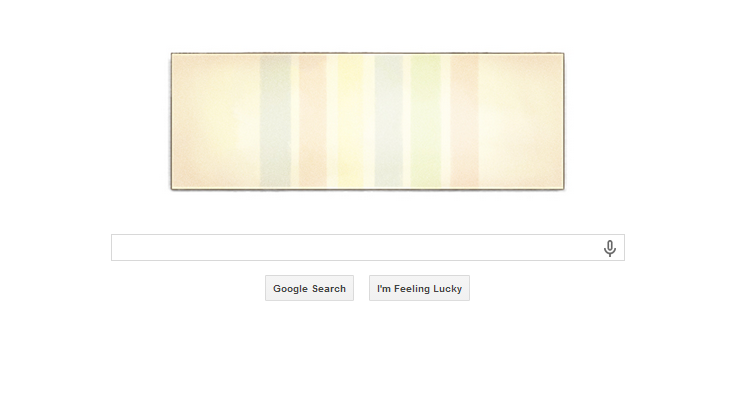
Screenshot from Google
AGNES MARTIN is associated with minimalist art, but she saw herself as an abstract expressionist.
She received her bachelor’s and master’s degrees at Columbia University, yet touted anti-intellectualism and rejected much scientific theory.
She lived in warm neighborhood communion with other celebrated painters in midcentury New York, yet spoke of enjoying the purity of solitude.
And she has been celebrated in media outlets such as this one, yet according to lore, the latter half of her life was marked by not reading newspapers or owning a television.
Agnes Martin painted grids — ethereal, shimmering expressions of beauty and spirituality that won her fame ’round the world — yet she seemed most serene when living alone somewhat off the grid, or as much as one might when the world keeps arriving at your adobe New Mexico door, looking to present you with national honors, international prizes and millions of dollars for your art.
She began to find her creative voice once she “turned her back on the world,†she said. Yet after she did, the world kept coming back to her. The Museum of Modern Art and the Whitney and the Hirshhorn and the National Gallery of Art, among so many others, now house her work — these emotional meditations on canvas speaking through their muted natural tones, from “Mountain†to “Falling Blue†to “Leaf in the Wind.â€
“Agnes Martin’s work was minimally elegant and gives definition to those two words,†Earl A. Powell, as director of the National Gallery of Art, told The Post’s Matt Schudel in 2004. “Her work was subdued, quiet, serene and contemplative. She made a huge contribution to postwar art.â€
The Canadian-born painter was inducted into the American Academy of Arts and Letters in 1989. Nearly a decade later she received the National Medal of Arts from the National Endowment for the Arts. She attended the medal ceremony in moccasins; in so many ways, no one else could walk in her shoes.
From where did the ideas flow for artwork that quietly resonated like oil and acrylic religion — offered as self-described imperfect attempts to channel perfection and praised by some critics as the equivalent of painted prayers?
She said she tried to empty her mind — all the better to see an inspiration when it popped along — yet intelligence and thoughtfulness flowed forth as her gray matter seemed to house wall-to-wall wisdom. Of what she could perceive in that emptied mind, she said: â€When I think of art, I think of beauty. Beauty is the mystery of life. It is not in the eye, it is in the mind.â€
To Martin, art was about finding inspiration — and then losing yourself in it.  â€Artwork is a representation of our devotion to life,†she said. “The enormous pitfall is devotion to oneself instead of to life. All works that are self-devoted are absolutely ineffective.â€
Agnes Bernice Martin was born on this day in 1912 in Maklin, Saskatchewan, moved to the United States while still a teenager and pursued art like a devotion to life. Google celebrates the 102th anniversary of her birth today with a “six-character†Doodle of aptly muted beauty.
When she died in Taos in 2004, Agnes Martin left no survivors. Except lasting influence. And abstract devotions to life. And a legacy of attempted perfection best appreciated if, while gazing at her work, you can only quiet your mind.
That was her painted prayer.
